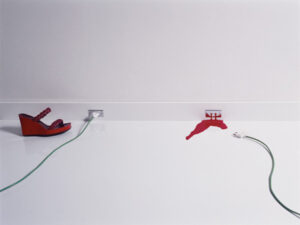Translator : Ravita Buaphuan
An image of a light-skinned girl with red hair, heavy makeup look and alluring expression that captivates all the eyes, is the kind of images that the photographer Guy Bourdin had presented on magazines for decades.
It might not be wrong to say that he was the most influential photographer in the fashion industry.
While fashion photography in the previous era would prioritize only the beauty of models and costumes, Bourdin’s choice of photography was way more advanced than that. As he combined art and imagination through lighting, colors, makeup, compositions or even adding narratives to the photo, his fashion photography became overwhelmed with emotions and temptation, making it impossible for the audiences to take their eyes off.
No wonder that most people would not believe that these photos were taken more than 50-70 years ago.
More importantly, his works have been the source of inspiration for later generation photographers. Also, his style has been adopted widely by high-end brands, who each adapted it with their own works and developed them into the fashion scene that we see today.
The Normal Hero would like to take you into the world of the legendary photographer of France, who was the first to bring Surrealist style into magazine photography, setting a new stage of fashion photography’s history.
01 The Woman Whom He Met Just Once
It was 30 years ago that a deadly disease has forever taken the life of the master photographer, Guy Bourdin away. But the charm in the art he had left has never been gone from the mind of people. It still, without noticing, influenced the fashion scene of Paris girls from generation to generation. It is for the reason that he was the main photographer for the most prestigious fashion magazine at that time like Vogue, also shot ad campaigns for brands like Chanel, Charles Jourdan, Pentax and Bloomingdale’s
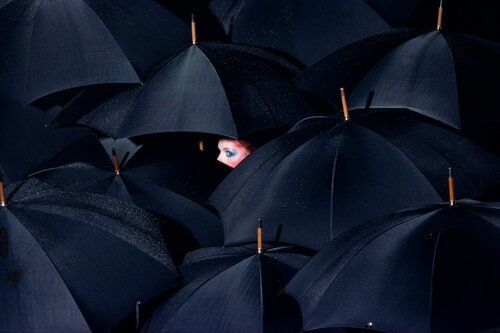
Guy Bourdin for French Vogue, September 1972
The major characteristics of his photography are the portrayal of Parisian women’ ways of life and the imagination towards them perfectly combined. Some present such simple things happen in everyday life, like sitting in a cafe, sipping red wine or buying baguettes. But Bourdin added spices into it with the use of colors, lighting and the models who look striking with their makeup, costumes and facial expressions.
Some models would appear with such a flashy image: eyes winged with blue eyeshadow; lips applied with shining gloss; looking sexy with black satin stockings and a feather headband that shines all over; wearing skinny pants, harness and high heels.
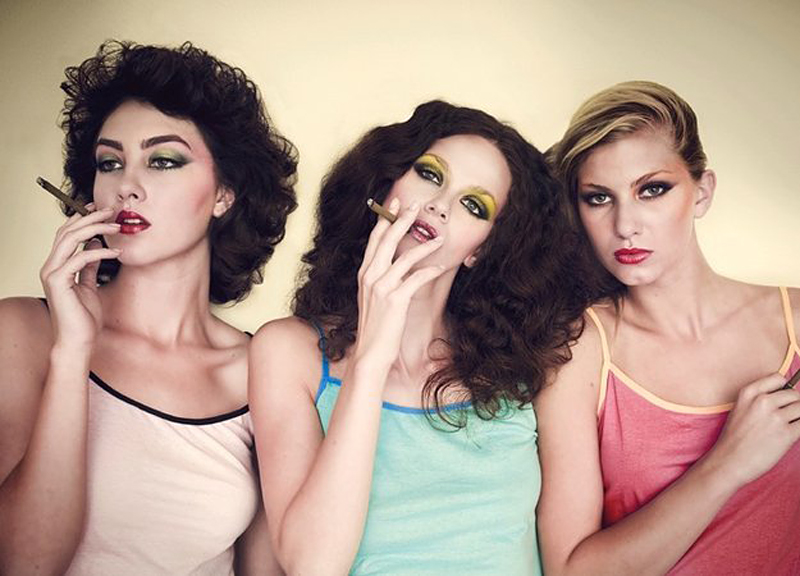
Guy Bourdin
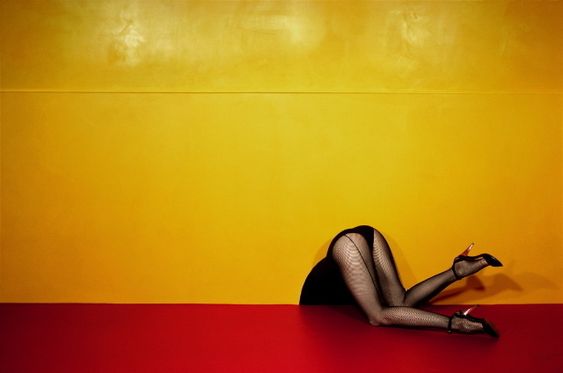
Guy Bourdin for Charles Jourdan, Autumn 1979
It is said that the photographer’s inspiration that made his model appear distinctive was his “mother”, the woman whom he met just once.
Helmut Newton another well-known photographer who were Bourdin’s contemporary recalled about his friend
“Though not remembering much about his mom, he could recognize her beautiful hair and ivory skin, which is why he liked to work with women who have red hair and pale skin like lilies. The heavy makeup was also a part of memories relating to his mother.”

Charles Jourdan Ad Campaign, ca. 1975
His father was Spanish, and his mother was Belgian. Both parted away since Bourdin was an infant. He was left with his paternal grandparents in Normandy, who also owned a restaurant business in Paris called Brasserie Bourdin.
After that his father remarried, brought in Bourdin’s stepmother and his half-siblings then moved back to the city.
It is said that his mother had attempted to meet her son too but was rejected by the new family.
Bourdin was very upset about this. He often told everyone that he had met his mom only once when she came to the restaurant to give him a present, and the other time when he talked to her on the phone.
Despite just a one-time meeting, the appearance of his mother became deeply ingrained in his mind. He felt that his mother was such a never-before-seen beauty who also looked graceful as a Parisian. This memory had greatly influenced and impacted on his creative process in years later.
After turning 18, while cycling in Provence, Bourdin came across Lucien Henry, an art dealer who introduced the young man to the beauty of art.
Bourdin moved into Henry’s house and lived there for six months concentrating on drawing and painting, before getting called for military service in the Air Force in Senegal, one of France’s colonies in Africa.
In Dakar, Bourdin was assigned to work as an assistant to aerial photographers and gradually absorbed all the techniques. Though not yet mastered, he enjoyed his new life there until he was discharged two years later. His life then resolved around trading cameras, paintings, and taking photos. He roamed around Paris and Normandy to take photos and survey how people’s ways of life and cityscape had changed after the period of war.
Nevertheless, that was not his actual style of photography. The style he was interested in was the hyperreal, overflown with imagination style called Surrealism. The person who had great influence on him was Man Ray, an American surrealist photographer who liked to experiment and question society via his art.
- Man Ray
- Les Larmes by Man Ray
It is said that it took such a great effort for Bourdin to get to work with Ray. He was shut out by Ray’s wife more than six times. And in the seventh time Ray finally accepted him as an artist under his mentoring.
Ray taught Bourdin about composition, lighting and combining imagination into his art, and also pushed Bourdin to hold an exhibition in 1952 under the pseudonym Edwin Hallan.
But most importantly, he was the one who introduced Bourdin to the chief editor of Vogue Paris. And that was a significant turning point for him to become recognized as the greatest fashion photographer of all time.
02 The Obscurity of The Photographer
“All the models wanted to work with him. He was kind of complicated, an artist without doubt, like a genius of the dark side. He could bring out the obscurity within himself, mix it with the feelings he had towards women and portray it in his works.
There were a lot of people who chose to come across countries just to work with him, for that during the 1960s-1970s, he was considered the mightiest fashion photographer.
His photography inspired a lot of middle-class girls to change up their styles, from the classic traditional look to a more colorful and festive style which thereby became a new wave of culture in France.
The main drive for him to create works that break all the boundaries is the pressure he had suppressed since childhood, getting dumped by his mom, feeling unwanted by his dad and excluded from his family. He also liked to lock up his wife and son in their apartment so she could not do anything on her own. Eventually in 1971 she was found dead from drug overdosing. Not to mention more of his ex-girlfriends who had attempted to commit suicide because they could not tolerate Bourdin’s tyranny and weird rules.
But even so, he was able to convert those pressures into such innovative work of art, as many define it as ‘stylish, egoistic and hyperreal’.
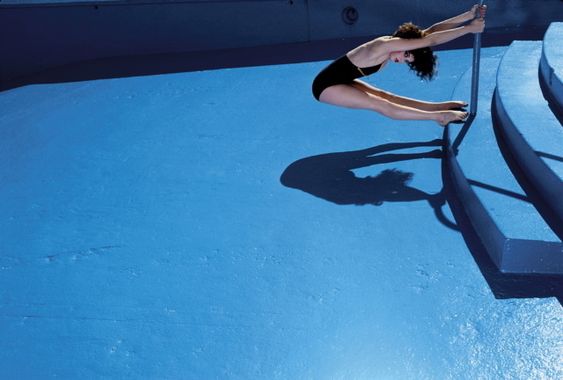
Guy Bourdin for Charles Jourdan, January 1978
Many people say that Bourdin’s photography is highly erotic and it would contain sexual connotations most of times. An image of a naked girl eating sausages and etcetera.
However, the interesting part is that no matter how much provocative his photos are, all of them never come close to the definitions of vulgarity, nudity or pornography. Things that can be extracted from his photos are human emotions and desires that need to be vented out, making Vogue woman readers assume that this kind of charm is what men want from women.
Bourdin was heavily obsessed with magazine photography. After entering the magazine industry, he had barely held any exhibition again as he intended all his works to be showcased on magazine pages.
He debuted at Vogue from February 1955 with the photo named “Hat Shocker”. After that he had published his works there for 30 years consecutively. In the meantime he had a partner photographer, Helmut Newton, as both his buddy and rival. The two pushed, encouraged each other and worked side by side to run the new stage of the fashion industry.
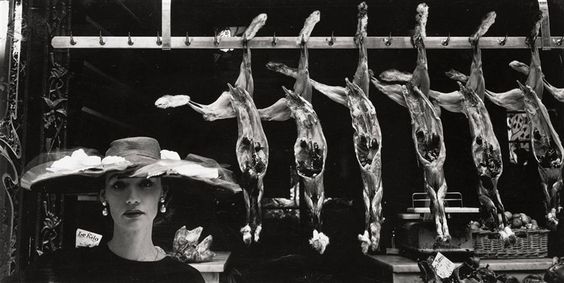
Guy Bourdin for Chapeau-choc (Hat Shocker) , 1954
Though having the same style of futuristic fashion photography, Bourdin and Newton were said to be different. Bourdin’s work was hyped more for its being aesthetically vivid and powerful, partly because of the talent for art he had accumulated even before start picking up cameras.
People like to compare his scenes with Alfred Hitchcock’s films as they are thrilling, gripping, stirring or even terrifying. He often transformed his models into corpses that look terrible and dreadful; or put on too heavy makeup to make them look like dolls, turning them into puppets.
One model said she did not need to do any pose. Just her lying dead on the ground or crying after reading a love letter would already seem like storytelling, leaving audiences wonder what had happened. Bourdin seemed to have a lot of fun shooting these scenes and also giggled while doing so.
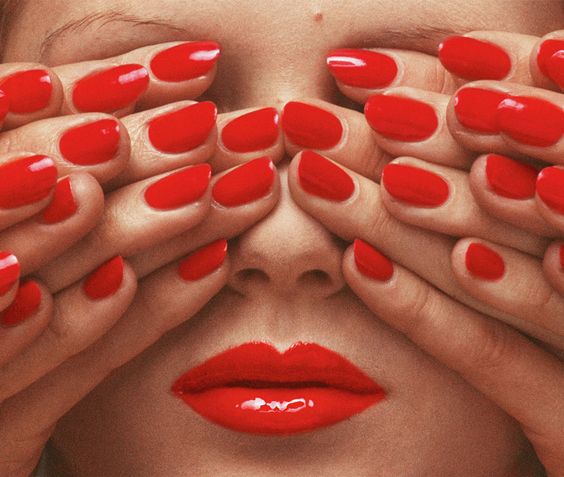
Guy Bourdin, Vogue Paris, 1970
Bourdin preferred to work with newbie models more than the experienced ones. It might be that they still had a lot to be explored and did not know yet how to deal with him as he liked to create a disturbing atmosphere to pressure his models. His studio looked like an underground prison, no phone, no connection to the outside world. The toilet was dirty, dark and awful and there were even rats running around. Additionally, he would enjoy prolonging working hours to stay with the models for longer.
Needless to wonder why some models could not put up with him, and thought of him as a misogynic.
His half-brother Michel firmly agreed with this point. He said that Bourdin wanted to punish women because his mother had let him down. He might have wanted to transform fashion photography and make it appear more artistic, but in fact he was a psychopath, an impossible person to be with.
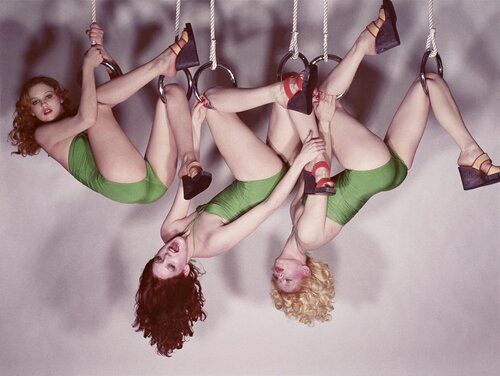
Guy Bourdin For French Vogue,March,1973
However, after all of these issues, his photography remained extremely wanted. It is because he could always deliver something new. He enjoyed thinking of scenarios that are beyond possibilities, the fantasy scenarios that make the audiences feel like they could fly. This is the main reason why a plenty of luxury brands wanted him to shoot ads for them and Bourdin managed to execute them all well, making his photography a buzz in the mass, even though it might look too eccentric sometimes.
One example is the image from Pentax calendar in the year 1980, he made an American model Nicolle Meyer naked, lay with her face down beside a pool, and paint her nails bloody red; or an ad campaign from Roland Pierre in 1982-1983 which looks roughly like an accident shot by police more than a fashion ad; while for the ad of Charles Jourdan in 1975, he did not use any model and just photographed a shoe with two electric wires, and blood pouring out of an outlet.
It is this one-of-a-kind specialty that makes him one of the greatest photographers in his era.
- Guy Bourdin for Pentax Calendar,1980
- Guy Bourdin for Charles Jourdan,1975
03 Dead Ending
After decades of being on the peak of his career, the popularity of surreal photography began to fade. People instead turned their attention to more natural looking photos. Also, most of the models were done and refused to work with Bourdin, saying he was way too demanding.
Moreover, Bourdin also had issues for his personal behaviors: how it was difficult to contact him because he would always pull out his phone line; how he believed heavily in superstitions and would only work with people who were born under appropriate zodiac signs; when eating, if there were already 13 people sitting, the 14th would be told to step away; how he rode a camel to Vogue office in Paris; or how he always went around and told everyone that he would like to use corpses from a morgue room as his models.
However, the most critical turning point for him was when his girlfriend, Sybille Dallmer, hanged herself in 1981. The tragedy was like a trigger for Bourdin’s loss of his inspiration and ability to think of any innovative scenario since then. He therefore stopped working and started living in solitude.
One year later, after receiving a huge back tax bill, he went to the tax office with his naked body, pointed to the officers and called them the Nazis. He was promptly arrested for that and although the editor of Vogue came to bail him out, Bourdin said he would prefer to stay in the prison for more.
And though eventually the editor got him out, Bourdin never pulled off any work again since then. Until in the year 1991, Bourdin died peacefully from cancer, leaving behind extensive archives of him which later became inspirations for newer generation photographers to follow the path up until today.
Reference
– Documentary Dreamgirls: The photography of Guy Bourdin on BBC
– Website THE UNITED NATIONS OF PHOTOGRAPHY
– Website Anatomy Films
– Website The Guardian
– Website PHAIDON
– Website TRENDLAND




